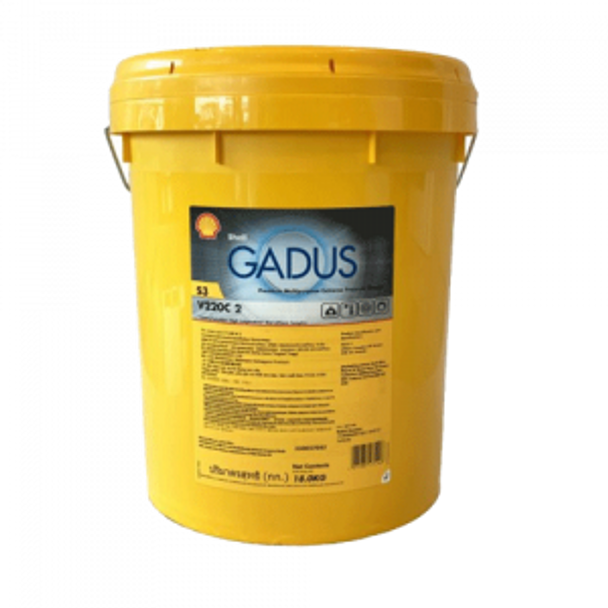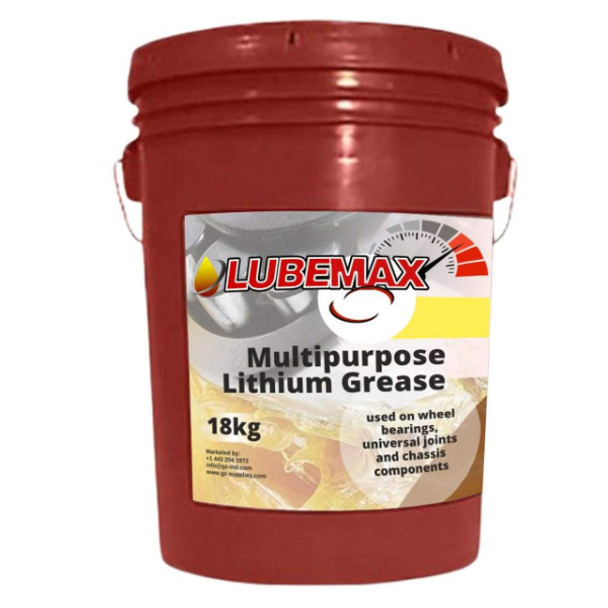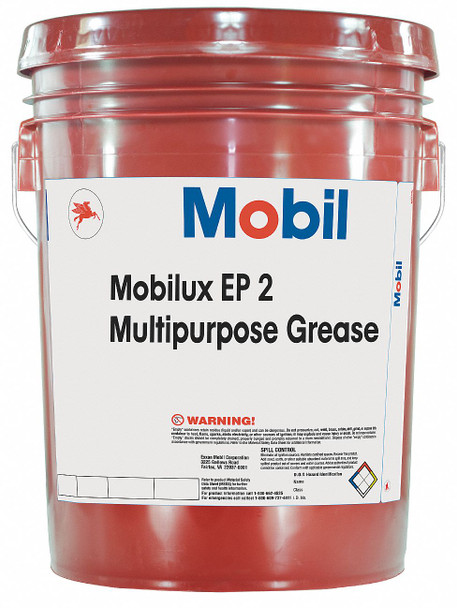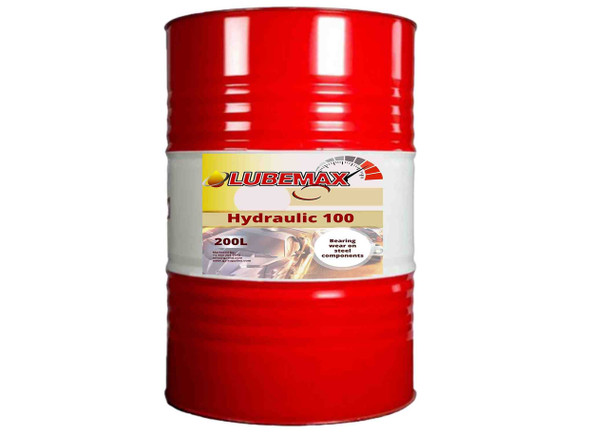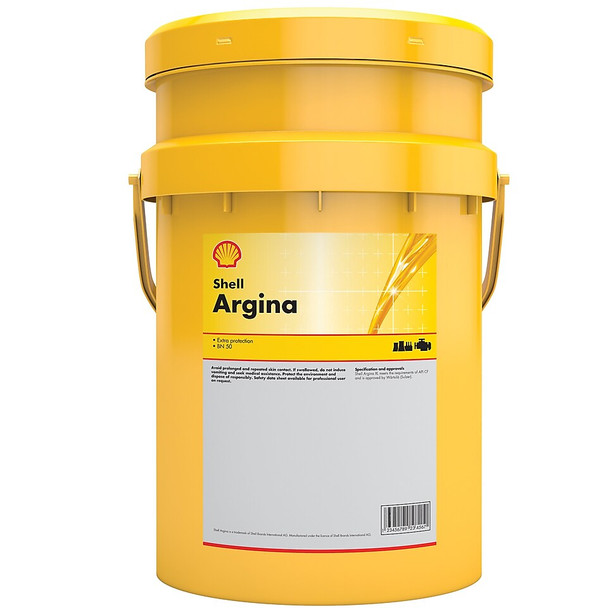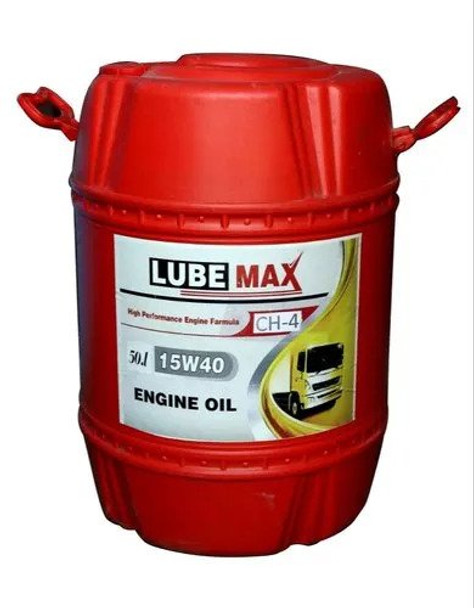How to Choose the Right Lubricants for Different Industrial Machines
Industrial lubricants are the key players in the proper functioning of various industrial machines because, efficient operation relies heavily on proper lubrication. Selecting the right lubricants is crucial to ensure optimal performance, longevity, and reliability of these machines.
One effective approach to choosing the right lubricants for different industrial machines is to consider the specific operating conditions and performance requirements of each machine. Conducting a thorough assessment of factors such as operating temperature, load capacity, speed, and environmental conditions is essential. For example, machines operating in high-temperature environments or under heavy loads may require lubricants with higher viscosity and temperature resistance to ensure optimal performance and prevent premature wear. Similarly, machines exposed to moisture or contaminants may benefit from lubricants with superior sealing and anti-corrosion properties. Additionally, consulting manufacturer recommendations and industry standards can provide valuable insights into suitable lubricant options. By tailoring lubricant selection to match the unique demands of each industrial machine, businesses can effectively optimize performance, extend equipment lifespan, and minimize maintenance costs.
This guide aims to provide comprehensive insights into the process of choosing the appropriate lubricants for industrial machine maintenance. By understanding the importance of lubrication and following the guidelines outlined here, businesses can optimize their equipment maintenance practices and enhance overall operational efficiency.
Shell Gadus S3 V460 2 (Formerly known as Shell Albida Grease HD 2, Shell Retinax SD 2)
Understanding Industrial Lubricants
Industrial lubricants are substances that reduce friction, wear, and heat between moving parts of machines and equipment. They also protect the surfaces from corrosion, contamination, and oxidation. Lubricants play a vital role in ensuring the optimal performance, efficiency, and longevity of industrial machinery.
There are different types of lubricants, each with its own characteristics and applications. The main categories are:
- Oils: Oils are liquid lubricants that flow easily and coat the surfaces with a thin film. They are suitable for high-speed and high-temperature applications, such as engines, turbines, and compressors. Oils can be classified into mineral, synthetic, and biodegradable oils, depending on their origin and composition. Mineral oils are derived from petroleum, synthetic oils are artificially made from chemical compounds, and biodegradable oils are derived from natural sources, such as vegetable oils or animal fats.
- Greases: Greases are semi-solid lubricants that consist of oil and a thickening agent, such as soap or clay. They are suitable for low-speed and high-load applications, such as bearings, gears, and joints. Greases have a higher viscosity and resistance to leakage than oils, and they can also provide a seal against dust and moisture. Greases can be classified into lithium, calcium, sodium, and complex greases, depending on the type of thickener used.
- Other types: Besides oils and greases, there are other types of lubricants, such as pastes, waxes, gels, and solid lubricants. Pastes are similar to greases, but they contain more solid particles, such as graphite or molybdenum disulfide, that provide extra protection and reduce friction. Waxes are solid lubricants that melt at low temperatures and form a lubricating film. Gels are liquid lubricants that have a gel-like consistency and can adhere to the surfaces. Solid lubricants are materials that have a low coefficient of friction, such as graphite, molybdenum disulfide, or polytetrafluoroethylene (PTFE). They are used in extreme conditions, such as high temperatures, pressures, or corrosive environments, where liquid or semi-solid lubricants are not effective.
When selecting lubricants for industrial machines, there are several factors to consider, such as:
- Operating conditions: The operating conditions of the machine, such as speed, load, temperature, pressure, and environment, determine the type and properties of the lubricant required. For example, high-speed and high-temperature applications require oils with low viscosity and high thermal stability, while low-speed and high-load applications require greases with high viscosity and load-carrying capacity. The environment also affects the choice of lubricant, as some lubricants may not be compatible with water, dust, chemicals, or other contaminants that may be present in the surroundings.
- Machine specifications: The machine specifications, such as the design, material, and geometry of the parts, also influence the selection of lubricant. For example, some machines may have specific requirements for the lubricant’s compatibility, performance, or safety. Some machines may also have special features, such as seals, filters, or sensors, that may affect the lubricant’s flow, cleanliness, or monitoring. Therefore, it is important to consult the manufacturer’s recommendations and instructions before choosing a lubricant.
- Other factors: Besides the operating conditions and machine specifications, there are other factors that may affect the selection of lubricant, such as the cost, availability, maintenance, and environmental impact of the lubricant. For example, some lubricants may be more expensive, scarce, or difficult to obtain than others, which may limit the options or increase the expenses. Some lubricants may also require more frequent or complex maintenance, such as changing, filtering, or testing, which may affect the efficiency and reliability of the machine. Some lubricants may also have a negative impact on the environment, such as causing pollution, waste, or greenhouse gas emissions, which may require special disposal or regulation. Therefore, it is important to consider the economic, social, and environmental aspects of the lubricant as well.
LubeMax Multipurpose grease 18kg
Steps to Choose the Right Lubricants for Different Industrial Machines
Step 1. Assessing Machine Requirements
The first step to choose the right lubricants for different industrial machines is to assess the machine requirements. This involves:
- Identifying machine types and applications:
Different machines have different purposes and functions, which affect the type and amount of lubrication they need. For example, a hydraulic system requires a fluid lubricant that can transmit power and pressure, while a gearbox requires a semi-fluid lubricant that can reduce friction and noise. Therefore, it is important to identify the machine types and applications before selecting a lubricant.
- Analyzing operating conditions:
The operating conditions of the machine, such as temperature, pressure, speed, and environment, also influence the lubricant selection. For example, high temperatures may cause the lubricant to degrade or evaporate, low temperatures may cause the lubricant to thicken or freeze, high pressures may cause the lubricant to leak or shear, and high speeds may cause the lubricant to overheat or lose viscosity. Therefore, it is important to analyze the operating conditions of the machine and choose a lubricant that can withstand them.
- Reviewing manufacturer recommendations and specifications:
The manufacturer of the machine may have specific recommendations and specifications for the lubricant, such as the grade, viscosity, compatibility, performance, or safety. These recommendations and specifications are based on the design, material, and geometry of the machine parts, as well as the testing and validation of the lubricant. Therefore, it is important to review the manufacturer recommendations and specifications and follow them as closely as possible.
Mobilux EP 2 Grease Oil
Step 2. Matching Lubricants to Machine Needs
Once the assessment of machine requirements is complete, the next crucial step is to match the identified needs with suitable lubricants. This involves selecting lubricants based on machine type and application, choosing the right viscosity and consistency, and considering additives for specialized requirements.
- Selecting Lubricants Based on Machine Type and Application
Tailoring lubricant selection to the specific characteristics and demands of each machine type and application is essential for optimal performance and longevity.
Guidelines:
- Heavy Machinery: Utilize high-viscosity lubricants designed to withstand heavy loads and provide robust protection against wear.
- Precision Machinery: Opt for low-viscosity lubricants to ensure smooth operation and minimize friction in high-precision tools.
- Choosing the Appropriate Viscosity and Consistency
Viscosity plays a critical role in lubrication effectiveness. Selecting the right viscosity ensures proper lubrication under varying operating conditions.
Considerations:
- Temperature Range: Adjust viscosity based on the anticipated temperature fluctuations to maintain fluidity.
- Load and Speed: Match viscosity to the machine's load-bearing capacity and operational speed for optimal lubrication.
- Considering Additives for Specialized Requirements
In some cases, machines may have specialized requirements that necessitate the inclusion of additives to enhance lubricant performance.
Common Additives:
- Anti-Wear Additives: Protect against wear and tear, extending the lifespan of critical components.
- Extreme Pressure (EP) Additives: Suitable for machines experiencing high-pressure conditions, providing additional protection under extreme loads.
LubeMax Hydraulic Oil ISO 100
Step 3. Ensuring Compatibility and Performance
The third step to choose the right lubricants for different industrial machines is to ensure the compatibility and performance of the lubricant. This involves:
- Checking compatibility with machine components:
The lubricant should be compatible with the machine components, such as seals, materials, and sensors, that it comes into contact with. Incompatible lubricants may cause damage, leakage, or malfunction of the machine components. For example, some lubricants may swell or degrade the seals, some lubricants may react or corrode the materials, and some lubricants may interfere or contaminate the sensors.
Considerations:
- Seals: Verify that the lubricant is compatible with the seals to prevent deterioration or swelling.
- Materials: Ensure the lubricant does not adversely affect machine components, such as metals, plastics, or elastomers.
- Performing compatibility tests if necessary:
If the compatibility of the lubricant with the machine components is uncertain or unknown, it may be necessary to perform compatibility tests to verify it. Compatibility tests are experiments that simulate the operating conditions and measure the effects of the lubricant on the machine components. For example, some compatibility tests are seal compatibility test, material compatibility test, and sensor compatibility test. Therefore, it is important to perform compatibility tests if necessary to ensure the safety and reliability of the machine.
Testing Procedures:
- Material Samples: Test the lubricant on small samples of machine materials to assess any adverse reactions.
- Seal Compatibility Tests: Specifically evaluate how the lubricant interacts with seals to prevent future issues.
- Assessing lubricant performance under expected operating conditions:
The lubricant should perform well under the expected operating conditions of the machine, such as temperature, pressure, speed, and environment. Poor performing lubricants may cause inefficiency, wear, or failure of the machine. For example, some lubricants may lose their viscosity, stability, or protection under high or low temperatures, some lubricants may not withstand high pressures or loads, and some lubricants may not resist water, dust, or chemicals.
Key Performance Factors:
- Viscosity Stability: Confirm that the lubricant maintains stable viscosity throughout the expected temperature range.
- Wear Protection: Assess the lubricant's ability to protect against wear under the machine's normal load and speed conditions.
- Corrosion Resistance: Ensure the lubricant provides adequate protection against corrosion, especially in humid or corrosive environments.
Step 4. Implementing Lubrication Practices
The fourth step to choose the right lubricants for different industrial machines is to implement the lubrication practices. This involves:
- Developing a lubrication schedule and maintenance plan:
A lubrication schedule and maintenance plan is a document that specifies the frequency, quantity, and method of lubricating the machine, as well as the procedures for inspecting, testing, and replacing the lubricant. A lubrication schedule and maintenance plan helps to ensure the proper and consistent application of the lubricant, as well as the detection and prevention of any issues or problems.
Steps to Develop a Plan:
- Regular Inspections: Determine optimal intervals for lubrication checks and inspections.
- Machine-Specific Requirements: Tailor the schedule to the unique needs of each machine type and application.
- Record-Keeping: Maintain detailed records of lubrication activities, ensuring a proactive approach to maintenance.
- Proper storage and handling of lubricants:
Proper storage and handling of lubricants are the practices that ensure the quality, safety, and availability of the lubricant. Proper storage and handling of lubricants include keeping the lubricant in a clean, dry, and cool place, away from direct sunlight, heat, or moisture, using appropriate containers and labels, avoiding contamination or mixing of different lubricants, and following the manufacturer’s instructions and regulations.
Storage Guidelines:
- Temperature Control: Store lubricants in a cool, dry environment to prevent degradation.
- Seal Integrity: Ensure containers are tightly sealed to prevent contamination.
- First-In-First-Out (FIFO): Adhere to FIFO principles to use older lubricants before newer ones.
- Training personnel on lubrication procedures and best practices:
Training personnel on lubrication procedures and best practices are the activities that educate and inform the staff who are responsible for or involved in the lubrication of the machine. Training personnel on lubrication procedures and best practices include providing them with the knowledge, skills, and tools to perform the lubrication tasks, such as the lubrication schedule and maintenance plan, the lubricant type and properties, the lubrication methods and techniques, and the safety and environmental precautions.
Training Focus Areas:
- Identification of Lubrication Points: Ensure personnel can identify and access all critical lubrication points on different machines.
- Correct Application Techniques: Train on proper application methods, whether through manual lubrication or automated systems.
- Safety Protocols: Emphasize safety measures during lubrication activities, including the use of personal protective equipment.
LubeMax Diesel Engine Oil 15W-40, API CJ-4
Step 5. Monitoring and Maintenance
Continual monitoring and maintenance are essential components of an effective lubrication strategy, ensuring ongoing machinery health and identifying potential issues before they escalate.
- Establishing a Lubricant Monitoring Program (e.g., Oil Analysis)
Implementing a lubricant monitoring program, such as regular oil analysis, provides valuable insights into the condition of the lubricant and the machinery it protects.
Key Aspects of a Monitoring Program:
- Regular Sampling: Schedule routine oil sampling to assess lubricant condition and identify any contaminants.
- Analysis Techniques: Employ modern analysis techniques to evaluate lubricant properties, wear debris, and overall machine health.
- Diagnostic Reporting: Utilize diagnostic reports to detect abnormalities, predict potential failures, and optimize lubrication practices.
- Regularly Inspecting Lubrication Systems and Components
Frequent inspections of lubrication systems and components are vital to identifying issues like leaks, blockages, or wear that may compromise the effectiveness of the lubricant.
Inspection Guidelines:
- Visual Checks: Conduct visual inspections for signs of leaks, discoloration, or unusual wear.
- System Integrity: Regularly assess the integrity of lubrication systems, ensuring they deliver the right amount of lubricant to critical components.
- Filter Replacement: Adhere to recommended filter replacement schedules to maintain optimal lubricant cleanliness.
- Addressing Issues Promptly and Adjusting Lubrication Practices as Needed
Swift action in response to identified issues is paramount to prevent further damage. Adjusting lubrication practices based on monitoring results ensures continuous improvement and adaptability.
Proactive Measures:
- Prompt Repairs: Address identified issues promptly to prevent escalation and potential damage.
- Adaptive Practices: Adjust lubrication practices based on monitoring feedback and changes in operating conditions.
- Continuous Improvement: Implement a culture of continuous improvement, incorporating lessons learned from monitoring data into the lubrication strategy.
Related article
How to Choose the Right Marine Lubricant Supplier in Nigeria: A Guide for Ship Owners and Operators
WHERE TO BUY INDUSTRIAL LUBRICANT IN NIGERIA
Conclusion
Selecting the right lubricants for different industrial machines is a crucial task that affects the performance, efficiency, and longevity of the machines. Lubricants reduce friction, wear, and heat between moving parts, as well as protect them from corrosion, contamination, and oxidation. However, not all lubricants are suitable for all machines, as different machines have different requirements, specifications, and operating conditions.
Therefore, it is important to follow a systematic and comprehensive process to choose the right lubricants for different industrial machines. The process involves five steps:
- Assessing machine requirements: Identifying machine types and applications, analyzing operating conditions, and reviewing manufacturer recommendations and specifications.
- Matching lubricants to machine needs: Selecting lubricants based on machine type and application, choosing the appropriate viscosity and consistency, and considering additives for specialized requirements.
- Ensuring compatibility and performance: Checking compatibility with machine components, performing compatibility tests if necessary, and assessing lubricant performance under expected operating conditions.
- Implementing lubrication practices: Developing a lubrication schedule and maintenance plan, proper storage and handling of lubricants, and training personnel on lubrication procedures and best practices.
- Monitoring and maintenance: Establishing a lubricant monitoring program, regularly inspecting lubrication systems and components, and addressing issues promptly and adjusting lubrication practices as needed.
By following these steps, one can ensure the optimal compatibility, performance, and efficiency of the lubricant and the machine. This will help to achieve the desired outcomes and goals of the machine, as well as to prevent or reduce any problems or risks. Choosing the right lubricants for different industrial machines is not only a technical but also an economic, social, and environmental decision that can have significant impacts on the productivity and profitability of the machine, as well as on the safety and sustainability of the environment. If you have any questions or enquiries, please do not hesitate to Contact Us
Recent Posts
-
Types of Surfaces: Common Maintenance Challenges and Solutions
Maintaining the various types of surfaces within a property, whether commercial or residential, is v …May 13, 2024 -
Understanding Surface Preparation: A Crucial Step in Coating Painting Services
In coating painting services, the meticulous surface preparation task often serves as the unsun …May 07, 2024 -
Comparing Different Coating Techniques: Pros and Cons
Coating techniques play a vital role in the longevity and functionality of products and structures b …May 06, 2024


